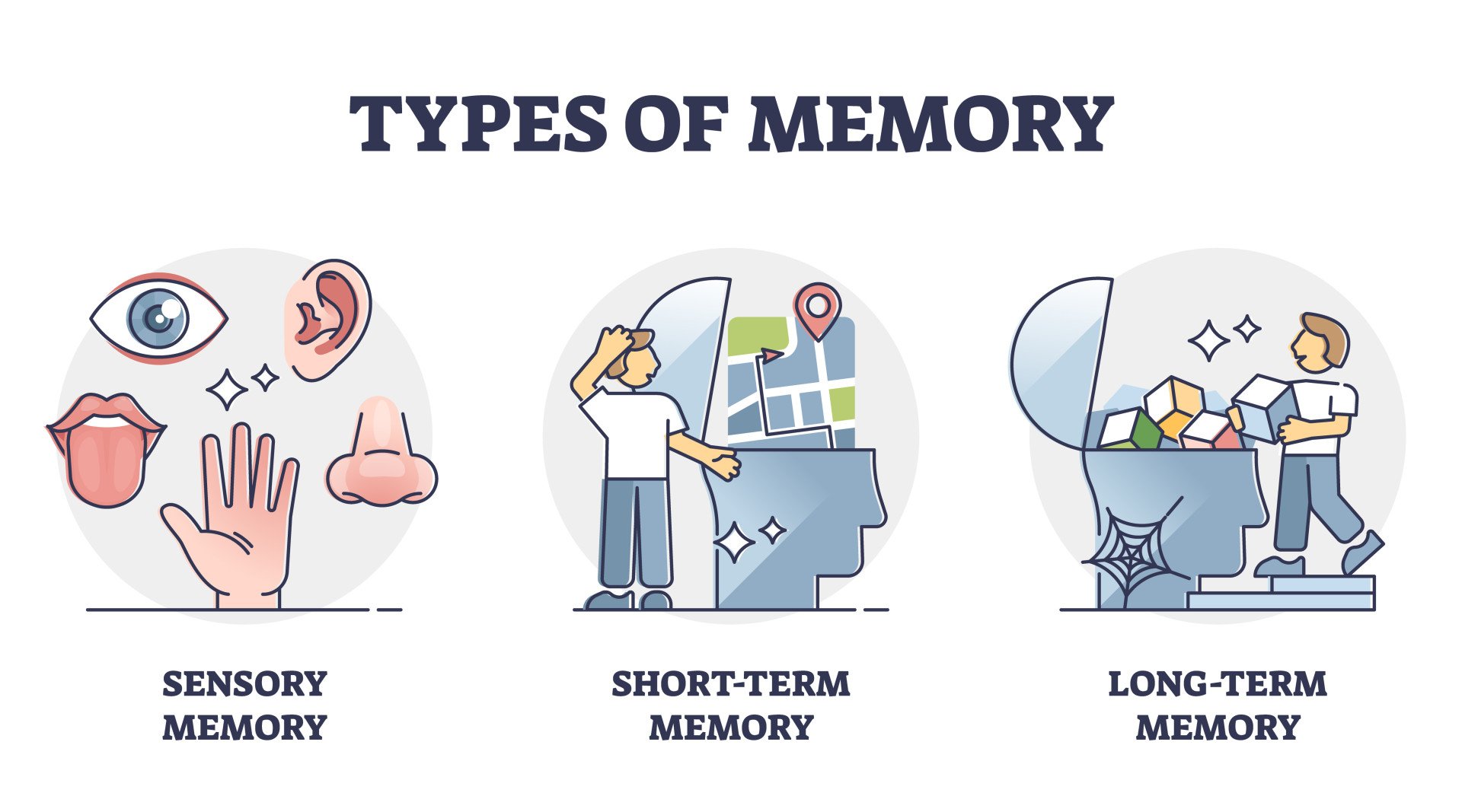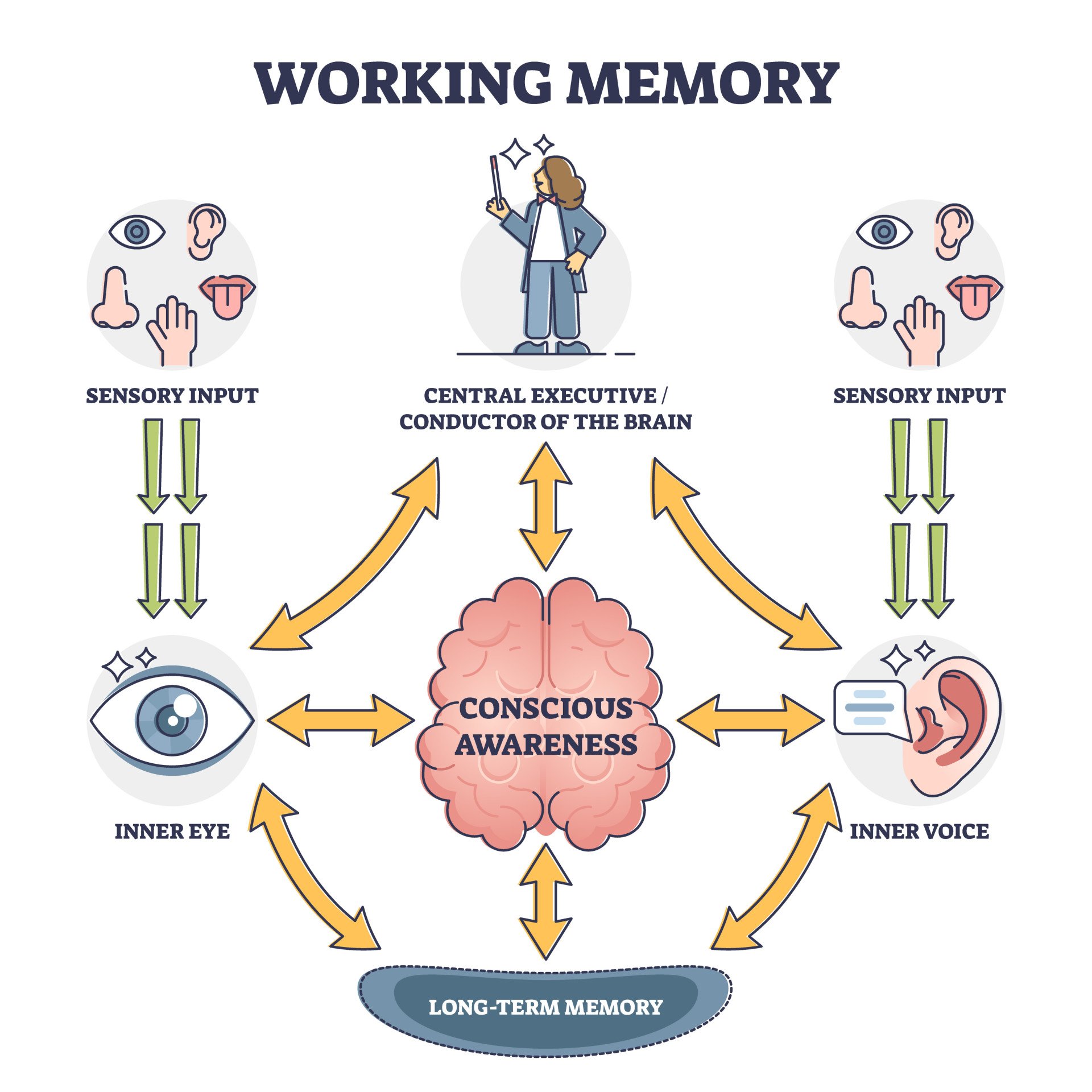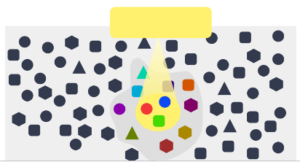Chapter 2: Learning and Memory
Note: Detailed information about the models described in this section have been left out and replaced with information and discourse relevant to educators in the workplace. For more information, refer to the references in the papers and articles.

Sensory Memory
All sensory experiences are stored within the sensory memory system. This system constantly retrieves information, most of which will be forgotten within 0.25-0.5 seconds if attention is not given. This store has a huge capacity, as all five senses are being stored, but a minimal duration unless attention moves it into working memory (Winkler et al., 2005).
Bradley’s and Hitch’s Model of Working Memory
Bradley’s and Hitch’s Model of Working Memory provides a framework for understanding how different types of information are processed and managed in the brain. In the previous chapter, we discussed neuroplasticity, which explains how these processes lead to brain structure and function changes, supporting learning, adaptation, and recovery. Together, they illustrate the dynamic interplay between cognitive functions and the brain’s ability to adapt and reorganize.
Bradley and Hitches’ model of working memory consists of four components (Baddeley et al., 1974):
- Central Executive Drives the working memory system and allocates incoming information to its different cognitive components.
- Phenological Loop (inner voice): The component of working memory that stores and processes spoken or written information.
- Visuospatial Sketchpad (inner eye): The component of working memory that stores and processes visual or spatial-based information.
- Episodic Buffer Is dedicated to linking information across all domains and is capable of storing data from working memory subsystems to be brought to conscious awareness.

Use the drop-down menus and video below to learn more about each subsystem
Atkinson and Shiffrin Long Term Memory Model

Humans’ long-term memory is more or less permanent and limitless. Information stored here can be ‘copied’ and retrieved through central executive functions to be attended to and manipulated in short-term memory. There are three processes involved in long-term memory: encoding (consolidation), storage, and retrieval (Atkinson et al., 1968).
Encoding
Encoding information from working memory (also known as short-term memory) to long-term memory requires rehearsal within the working memory space. The type of rehearsal is essential, and linking the rehearsal with senses, environmental factors, behaviors, or previously encoded memories strengthens the encoding process (Craik et al., 1972).
Elaborative vs. Maintenance Rehearsal
Rehearsal is the essential process that initiates and facilitates the transfer of information into long-term memory. However, written recall (maintenance rehearsal) is a limited memory-encoding method. A levels-of-processing framework can better predict long-term recall. In this framework, items encoded at a deeper, more semantic level are shown to have stronger traces in long-term memory (Craik et al., 1975).
Retrieval
Memories stored in long-term memory are retrieved using a combination of cues, associations, and evaluations. Retrieval is a logical process that involves individuals assembling associated cues to a specific memory within their working memory store. Using these cues, individuals will search particular areas of long-term memory with associations to the cue, evaluate them within their working memory, and either successfully retrieve the information needed or restart the search again, perhaps with different cues. The search is automatic and unconscious, which is why memories may ‘pop’ into your head (Atkinson et al., 1968).
Retrieval Cues
One may think of long-term memory as an endless array of interconnected memories. Each encoded memory is associated with other encoded memories through sensory inputs, behaviors, patterns, environmental factors, etc. To retrieve a specific memory, cues are used to locate a specific area of the long-term memory storage, similar to placing a spotlight on the area of memory most likely to contain the answer based on cues given (Raajimakers et al., 1981).

The next step is to evaluate each memory retrieved from that space for its relevancy to the current task. This would suggest that encoding memories through meaningful processes, such as elaborative rehearsal, increases the memories’ associated cues and therefore makes it easier to retrieve.

